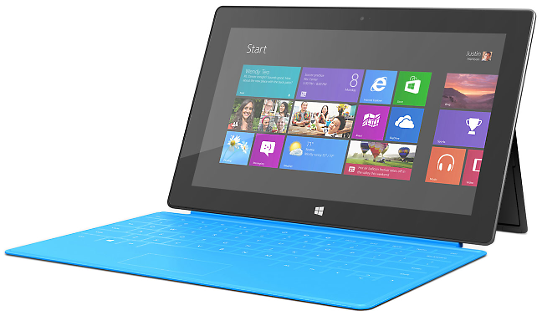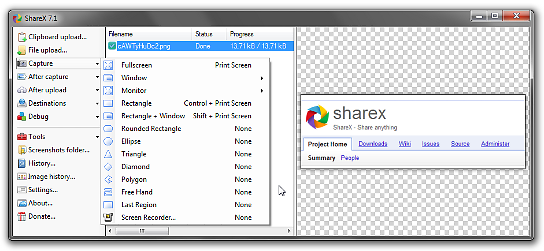Ouch! Microsoft Writes Off Almost a Billion Dollars on Surface RTs!
 Somebody’s head must’ve rolled on this one!
Somebody’s head must’ve rolled on this one!
Microsoft’s $900 million Surface RT write-down: How did this happen?
By: Mary Jo Foley for ZDnet – Microsoft announced a $900 million ‘inventory adjustment’ charge for its Surface RTs, parts and accessories on July 18. That write-down completely overshadowed the performance of the rest of the products and services that contributed to the company’s Q4 2013 earnings.
(Among those overshadowed was Office 365 — the Microsoft subscription service via which it provides Office client and hosted Office server apps. Office 365 is now on a $1.5 billion run rate, up from the $1 billion run rate it hit in Q3 FY2013. Another that got eclipsed: Windows Phone — plus Android patent licensing — increased $222 million for the quarter.)
The biggest question, to my mind, about today’s unexpected Surface RT write-down is how did Microsoft find itself in this predicament in the first place? How did officials seemingly misestimate the number of Surface RTs they should have made and how much they should have charged for them?
I had a chance to ask Brian Hall, the General Manager of Surface Marketing, that very question. Unsurprisingly, he wouldn’t address this. But he did say that Microsoft is 100 percent committed to Surface RT and Windows RT going forward and has no plans to drop work on either product.
At the now-reduced $350 price (plus another $100-plus per keyboard), Microsoft believes it is righly positioned for success with the product, its officials said today. Hall elaborated, by saying that Microsoft officials believe that by getting more Surface RTs into more users’ hands, demand will accelerate for the product.
‘We know we need a lot of Surface users to start the fly wheel of people recommending it,’ Hall said.
In addition to cutting the price, Microsoft also has slowly expanded Surface RT’s distribution, most recently adding a handful of resellers to the mix.
But many of the factors beyond price that have contributed to the lackluster demand for the Surface RT haven’t changed all that much.
There are still few, if any, ‘killer’ Windows Store apps that might push someone to choose a Surface RT over an iPad or an Android tablet. In fact, the total number of Surface RT apps is still quite low (around 100,000), nine months after the product launched.
The performance of the Surface RT still feels sluggish, thanks to the Tegra ARM processor powering the device — though it’s somewhat better after putting Windows 8.1 preview on the device.
There are still relatively few physical stores where potential Surface RT customers can try out a device to see if they’re interested in buying one. Microsoft’s Surface ads are nothing to write home about, though they have started to get better — especially the Siri-centric ones.
But again, why did Microsoft make so many Surface RTs? If some back-of-the-napkin calculations are right, Microsoft may be sitting on an inventory of 6 million unsold Surface RTs. (Microsoft won’t say how many devices they made or sold.)
Isn’t this a company whose officials have prided themselves on telemetry data and visibility? Yes, it was the first time Microsoft was making its own PCs, but the company has made its own gaming console, mice and keyboards in the past, so there were people at the company who knew a considerable amount about supply chains.
Would a different operating system have made much, if any difference in the success of the Surface RT? Microsoft spent years porting Windows to ARM and finally launched it in the form of Windows RT. Would acceptance of the Surface RT have been better if Microsoft had just used the Windows Phone OS to power Surface RT instead? (I recall hearing that the relative newness of the Windows Phone OS was at least one of the reasons Microsoft decided against using it.) I asked Hall if Microsoft is or might consider putting the Windows Phone OS on a future Surface RT model and was told no comment.
Would opting to wait for a more powerful ARM chip have boosted Surface RT sales, even if it meant Microsoft missed holiday 2012 with the devices? Would launching the Surface Pro ahead of the Surface RT have primed the market any better for a device that couldn’t run almost any Win32 apps?
I saw a couple of folks tweet that they now fear that Microsoft will end up discontinuing Surface RT, the same way the company dropped the Zune after finally getting it relatively right with the Zune HD. The damage to the brand and lack of a true competitive product was done by the time Microsoft finally got the mix right. I’d expect the old ‘we can’t hear you’ Microsoft to persist with the Surface RT’s successors regardless of what the market said/did. The new Microsoft may be less likely to do so, I’d think.
But Hall reiterated that Microsoft has no plans to stop work on Windows RT or Surface RT. He wouldn’t drop any hints about what’s next for Surface RT, but recently officials said to expect new Surface accessories and a Surface RT update of some unspecified kind to arrive in fiscal 2014, which ends on June 30, 2014. When I asked if a 4G LTE-enabled Surfce RT device was in the pipeline, Hall would only say ‘we see lots of tablets sold with LTE.’
Microsoft plans to push the Surface RT as an iPad competitor, emphasizing its role as a ‘productivity tablet’ running Office — plus its relatively lower price — as its main differentiators, Hall said.”




 Everybody’s got their own special way of grabbing a screenshot from your computer screen. Want a really, really simple, fun way to do it? Now you have a free, Open Source way! ShareX! Check out the cool features!
Everybody’s got their own special way of grabbing a screenshot from your computer screen. Want a really, really simple, fun way to do it? Now you have a free, Open Source way! ShareX! Check out the cool features! It even has a Screen Color Picker, to get the exact color hex code from a portion of your screen… which I have been using another GSotW to do…
It even has a Screen Color Picker, to get the exact color hex code from a portion of your screen… which I have been using another GSotW to do…